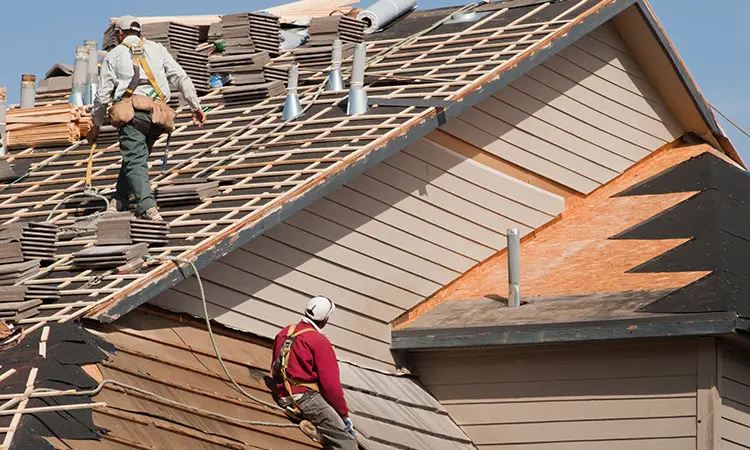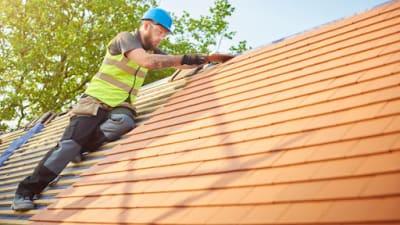Oahu Roofing: Trustworthy Roofing Solutions for Residences and Companies
Wiki Article
Checking Out the Numerous Kinds Of Roof Coverings: Which One Is Ideal for Your Home?
When thinking about the myriad kinds of roofs offered, it is essential to assess just how each option lines up with your home's one-of-a-kind demands, consisting of environment conditions, aesthetic choices, and architectural capability. From the timeless saddleback roof that successfully networks rain to the contemporary flat roofing system offering metropolitan flexibility, each style presents unique advantages and obstacles. Moreover, the option may considerably impact long-lasting upkeep and energy efficiency. As you consider the very best fit for your house, it is very important to weigh these aspects very carefully, especially as some options may stun you with their potential benefits.Gable Roofings
Gable roofings, defined by their triangular form and sloping sides, are a preferred selection amongst house owners seeking both aesthetic allure and performance. This roofing design successfully permits reliable water overflow, decreasing the danger of water merging and succeeding damages. Additionally, the high slopes develop adequate attic space, which can be made use of for storage space and even converted into living areas.One of the main benefits of saddleback roofs is their ability to hold up against rough weather. The design aids in decreasing wind resistance, making them particularly ideal for areas susceptible to storms. Moreover, gable roofing systems can be created using a range of products, including roof shingles, floor tiles, and metal, offering homeowners with versatility in layout and spending plan.
From an architectural point of view, gable roof coverings can improve the visual appeal of a home, providing a traditional and ageless appearance. In general, gable roofings remain a popular alternative due to their equilibrium of usefulness and style, appealing to a wide variety of house owners.
Apartment Roofs
While usually forgotten for more conventional roofing system styles, flat roof coverings offer one-of-a-kind benefits that deal with details architectural needs and modern layout choices. These roof coverings are defined by their minimal pitch, allowing for reliable use space, especially in metropolitan environments where optimizing square video footage is crucial.One significant advantage of level roofing systems is their flexibility. They can be made use of as additional living spaces, such as roof gardens, patios, or solar panel installments, improving the capability of a home. Moreover, level roofings are typically much easier and much safer to browse during maintenance, helping with fixings and assessments without the challenges postured by high inclines.
Flat roofings can also be extra cost-efficient in regards to materials and installment. With a simpler layout, they often require fewer sources, translating right into reduced labor prices. Nevertheless, it's crucial to think about water drainage and waterproofing, as level roof coverings can be prone to merging water otherwise appropriately made.

Hip Roof Coverings
Hip roofs stick out for their classy design and structural stability, making them a popular choice among house owners. Identified by slopes on all 4 sides, hip roofing systems supply a healthy visual that enhances various building designs - roof repair oahu. The symmetrical nature of these link roofs helps to distribute weight evenly, boosting security and durabilityOne of the key advantages of hip roofs is their ability to withstand harsh climate condition. The sloped surface areas help with efficient water drainage and snow runoff, reducing the threat of leaks and architectural damages. Additionally, the design reduces wind resistance, making hip roofings less vulnerable to wind uplift contrasted to other roofing system types.


Dropped Roofings
Lost roofing systems, unlike the complexity of hip roof coverings, provide a structured and minimal layout that attract modern-day appearances. Defined by a solitary sloping surface area, lost roofing systems are often used in modern design, garden sheds, and various other functional structures. This simpleness not just enhances aesthetic charm but likewise permits efficient water overflow, making them ideal for different climates.Among the primary benefits of shed roofings is their cost-effectiveness. With less products called for and a straightforward installation process, home owners can save both time and cash. The style likewise allows the unification of huge home windows or skylights, advertising all-natural light and producing large insides.
Nonetheless, it is important to take into consideration the prospective disadvantages, including restricted insulation choices and the requirement for careful design to stay clear of too much warmth build-up. In addition, lost roofings may not mix seamlessly with traditional architecture, which can be a problem for some house owners.
Eventually, dropped roof coverings offer a elegant and useful roofing solution for those looking for modernity and performance. When choosing a roofing system type, reviewing individual aesthetic preferences and practical requirements will certainly direct home owners to the very best selection for their one-of-a-kind requirements.
Mansard Roofs
Mansard roof coverings, defined by their unique four-sided style, are a hallmark of French style that integrates elegance with performance. This architectural design includes 2 slopes on each side, with the reduced slope being steeper than the top one. The distinct arrangement enables added space in the top levels, making it an ideal option for homeowners looking for to make the most of functional location without expanding the structure's footprint.One of the substantial advantages of a mansard roofing system is its official source convenience. It can be adapted to numerous architectural styles, from standard to modern, boosting the visual appeal of any type of home. In addition, the ample area developed under the roof can quickly fit dormer home windows, which permit natural light and ventilation, additional boosting the comfort of the living location.
However, prospective home owners need to take into consideration the upkeep needs linked with mansard roofings. Setup costs may be higher compared to simpler roof covering layouts due to the intricacy of building and construction.
Final Thought
Each roof design provides one-of-a-kind benefits, such as the performance of gable roofing systems, the modern-day charm of shed roof coverings, and the stability of hip roofings. Flat roofs offer functionality for city environments, while mansard roof coverings provide extra living room despite greater installment costs.From the traditional gable roofing that effectively networks rain to the modern flat roof offering metropolitan flexibility, each style provides unique benefits and obstacles (roof repair oahu). In addition, the design reduces wind resistance, making hip roofings much less at risk to wind uplift compared to other roofing system kinds
Lost roofings, in comparison to the intricacy of hip roofs, offer a minimalist and structured layout that allures to modern aesthetic appeals. Each roof design offers special benefits, such as the performance of gable roof coverings, the modern-day allure of shed roofings, and the security of hip roofing systems. Level roof coverings supply usefulness for city settings, while mansard roof coverings give additional living area in spite of higher installation costs.
Report this wiki page